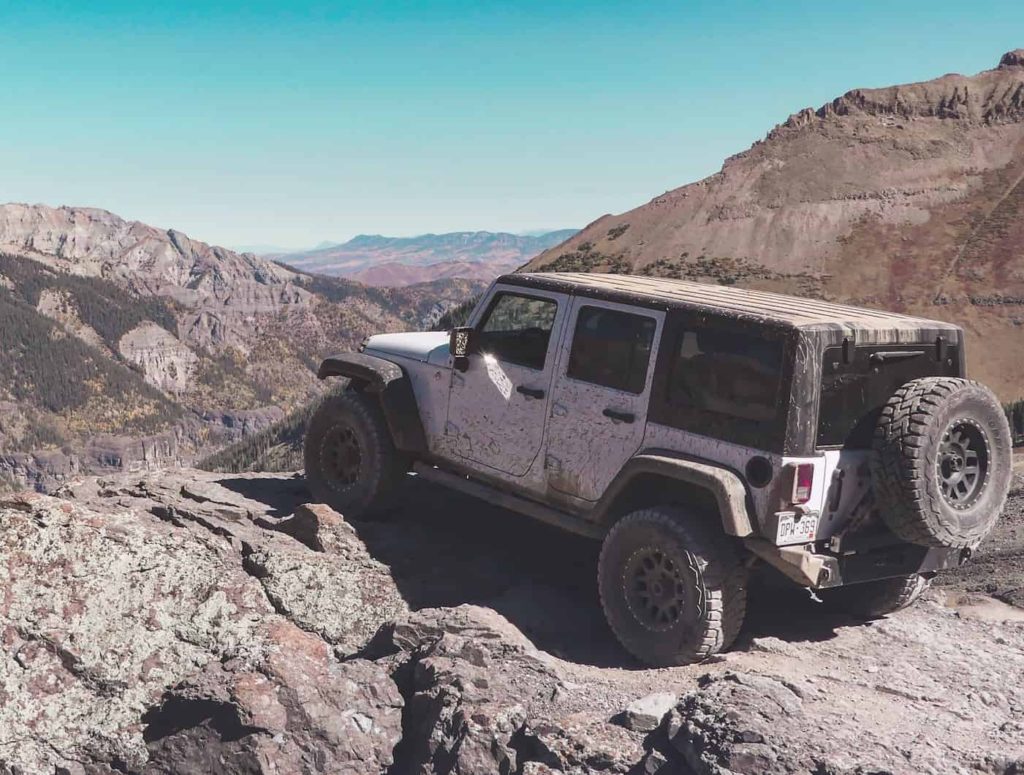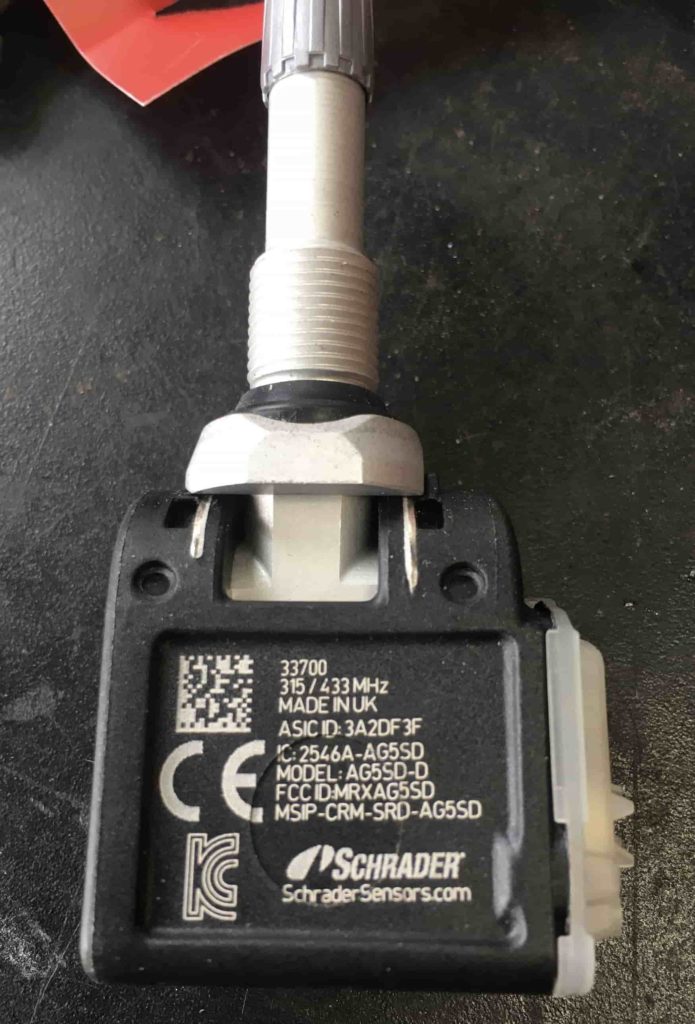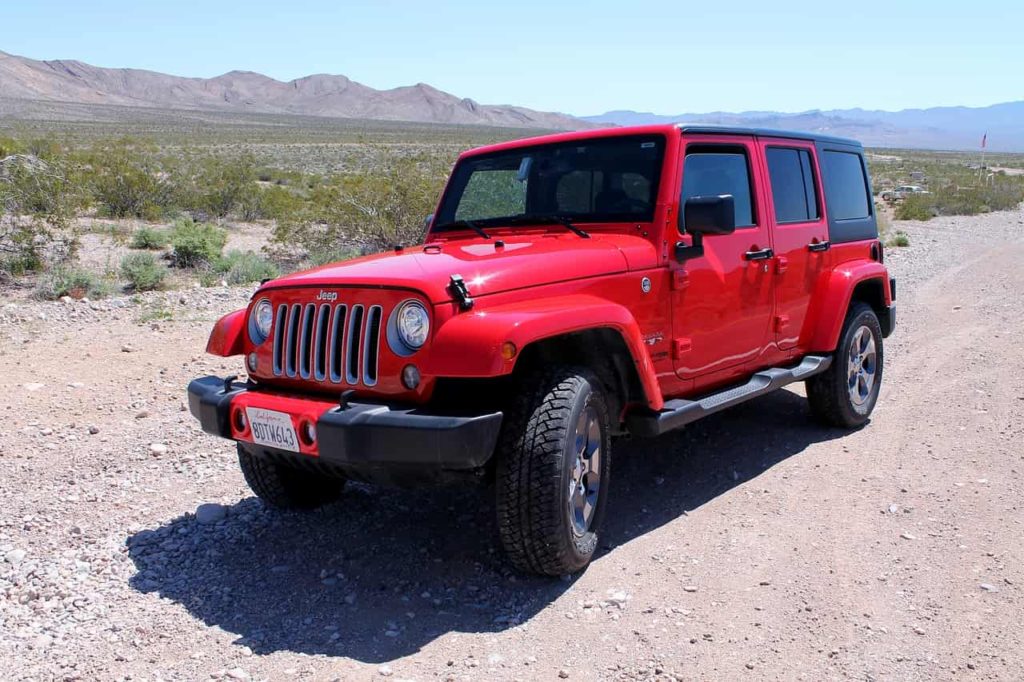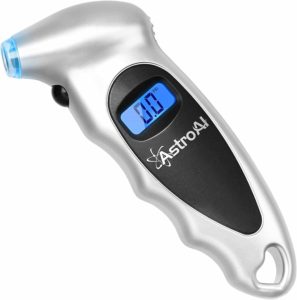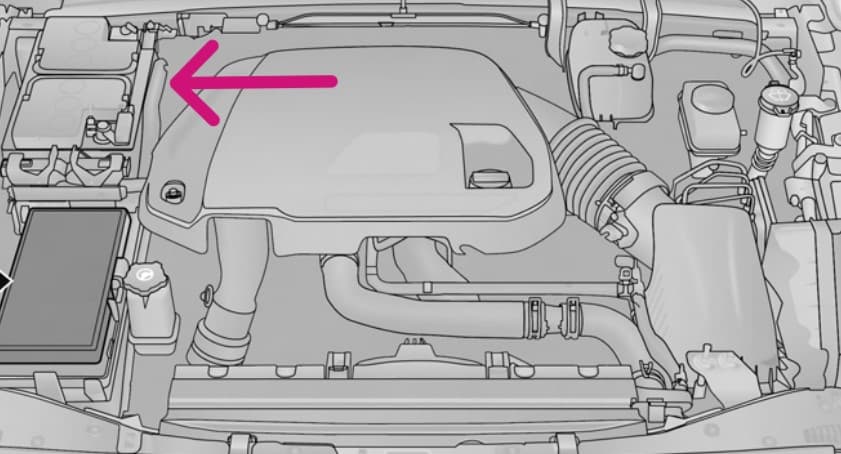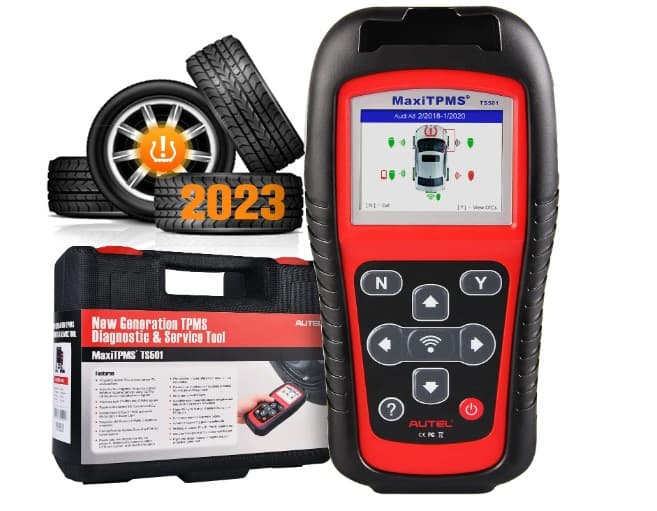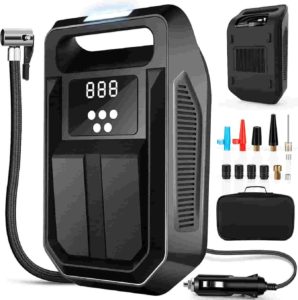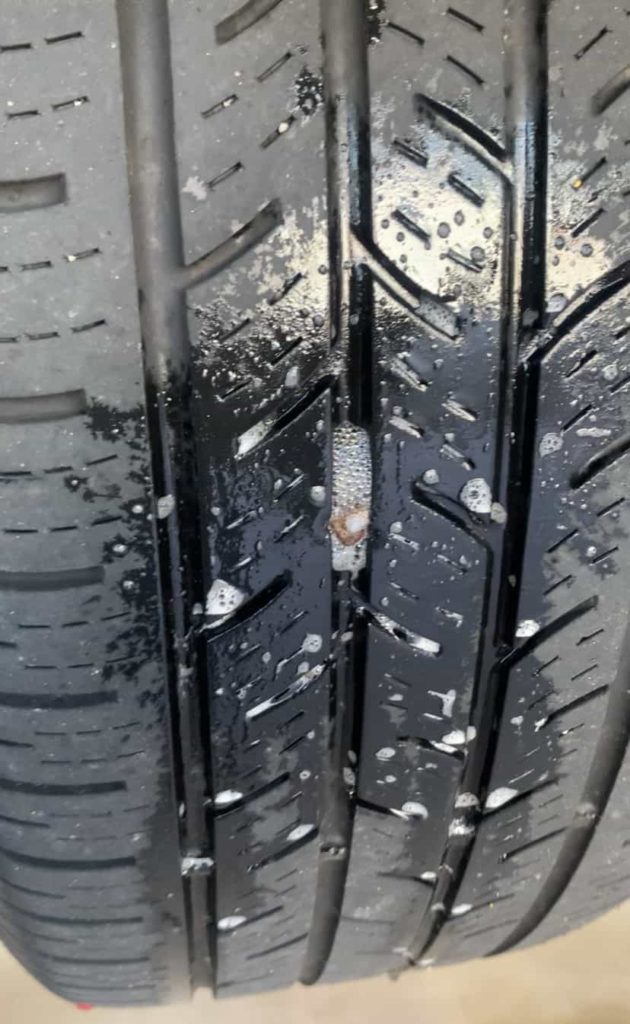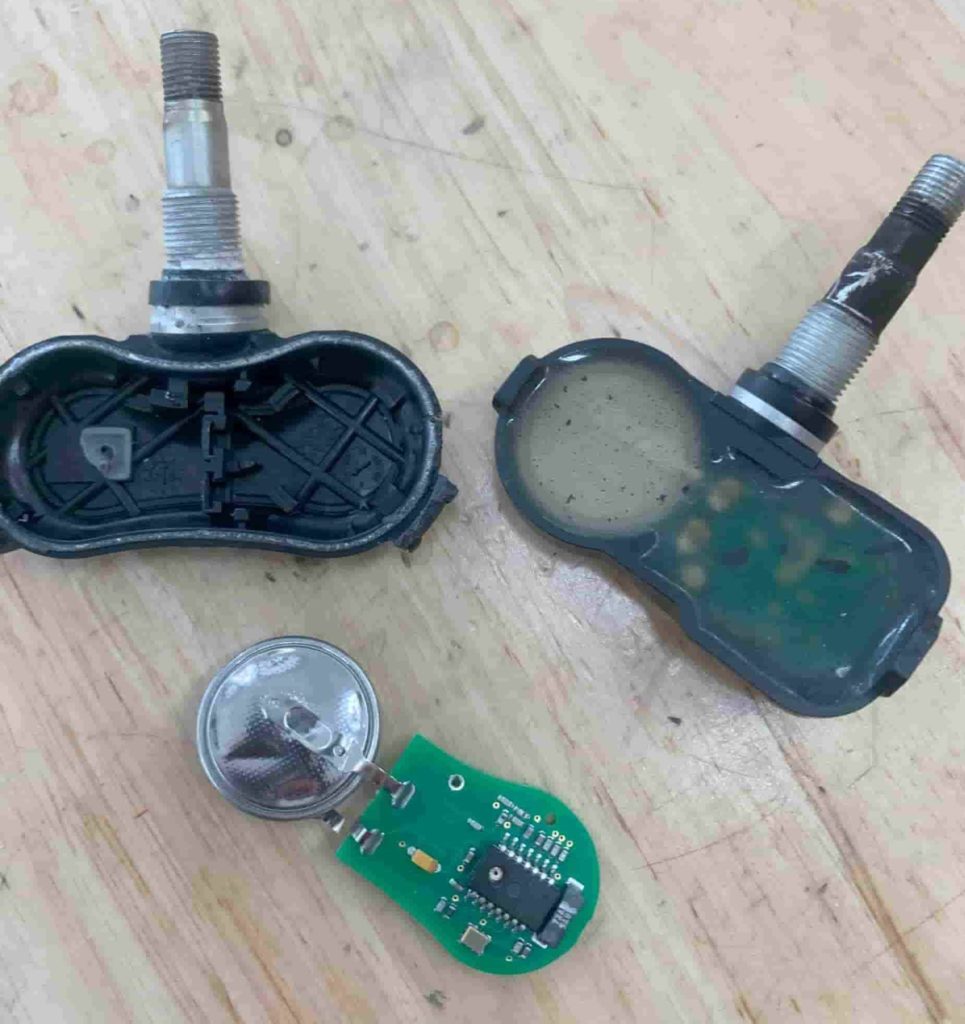How Does the Jeep Wrangler Tire Pressure Monitoring System Work?
The Jeep Wrangler’s Tire Pressure Monitoring System (TPMS) is a sophisticated safety feature designed to alert drivers when there is a significant change in tire pressure in any of the vehicle’s tires. This is how it works
1. Sensors Inside the Tires
The TPMS sensors inside each tire are responsible for collecting accurate tire pressure readings. Here’s a more detailed explanation of how they function:
Pressure Measurement: The sensors are equipped with a pressure transducer that converts the tire’s air pressure into an electrical signal.
Temperature Sensing: The sensors also measure the temperature within the tire, as temperature can affect pressure readings and be used for diagnostic information.
Battery and Power Management: These sensors are battery-operated, so they include power management features to conserve battery life.
Unique ID: Each sensor has a unique ID number to distinguish it from others in the system, ensuring that the data from each tire is correctly identified and processed.
Data Transmission Protocols: The sensors operate on specific frequencies, either in the 315 MHz or 433 MHz range, to transmit the data to the central TPMS module.
2. Transmitting Information
The transmission of information from the sensors to the TPMS module involves several steps:
Signal Transmission: The sensors send their data, including pressure, temperature, battery status, and sensor ID number, to the TPMS receiver module using Radio Frequency (RF) signals.
Data Integration: The TPMS module gathers data from all four (or more) sensors, compiling it into a coherent format for analysis.
3. Monitoring & Analysis
The monitoring and analysis performed by the TPMS receiver module are vital for the system’s functionality:
Pressure Comparison: The module compares the transmitted pressure readings with a pre-set optimal range defined by the manufacturer.
Sensor Health Monitoring: The module also monitors the health of the sensors themselves such as their battery status and can alert the driver if maintenance or replacement is needed.
Jeep Wrangler Low Tire Pressure Reset Procedure
Inflate the Tires to Proper Pressure: If the TPMS Warning Light is on, fill the tires to the recommended cold tire pressure. If the tires are warm from driving, the tire pressure might require an additional 4 psi (28 kPa) above the recommended cold tire pressure to turn the TPMS Warning Light off. For example, the Jeep Wrangler recommends 36 Psi in the front tires, put 40 Psi in.
Drive the Vehicle: The tire pressure system will automatically update and the TPMS Warning Light will turn off once the TPMS receiver module receives the updated tire pressures. The vehicle may need to be driven for up to 20 minutes above 15 mph (24 km/h) in order for the TPMS to receive this information. After the tires have cooled down, readjust the tire pressure back to the recommended tire pressure.
What Causes the Jeep Wrangelr Tire Light to Come On?
Changes in Ambient Temperature: The warning light may activate due to a drop in temperature, especially during seasonal changes.
Tire Punctures and Air Leaks: Road debris can cause tire punctures, leading to a loss of air in the tire.
Issues with Valve Stems: Dry-rotted rubber valve stems can crack and cause leaks and metal valve stems use a rubber gasket that can cause leaks.
Impact-Related Tire Damage: Hitting obstacles like potholes or curbs can cause structural damage such as tire bubbles, resulting in pressure loss.
Damaged Wheels: Damaged, corroded, or cracked wheels can cause pressure loss, particularly with low-profile tires.
Malfunctioning TPMS Sensors: Faulty sensors or sensors with low battery power will cause a TPMS malfunction.
Issues Following Tire Rotation or Replacement: The warning light may turn on if the TPMS is not reset after tire rotation or replacement, causing confusion between front and rear tire positions.
Effects of Altitude Changes: A change in elevation can alter tire pressure, with a 1 Psi change for every 1.5 Km change in altitude.
Natural Reduction in Pressure: Factors like permeation, temperature variations, or dry-rot can cause gradual pressure loss, activating the warning light.
Electrical and Software Issues: The Jeep Wrangler TPMS module might require updates or have software problems.
Considerations for Snow Tires: Using separate wheels for snow tires may require additional sensors or swapping of sensors. If the same wheels are used, this is not a concern.
Mistakes in Tire Installation: If not careful when mounting a tire onto a wheel, you can easily break a TPMS sensor.
Wrong Tire Pressure Settings: Inflating tires to a pressure that’s too high or too low can cause issues.
Exposure to Environmental Elements: Harsh chemicals, salt, or excessive moisture can impact the sensors.
Interference from Radio Frequencies: Devices emitting radio frequencies within the same range as TPMS sensors (315 Mhz or 433 Mhz) might cause interference, leading to incorrect readings.
Physical Damage to the TPMS Receiver: Damaged connectors or wires leading to the TPMS receiver module can cause inaccurate tire pressure readings.
What is the Jeep Tire Fill Alert Feature?
The Jeep Wrangler Tire Fill Alert feature is designed to help you when inflating or deflating your tires to the correct pressure. Here’s how it works in simple terms:
Notification System: When you are filling or deflating the tire, the Tire Fill Alert feature will notify you by horn beeps/chirps when the tire pressure reaches the recommended level. This helps you know exactly when to stop inflating or deflating.
Settings Adjustment: You can choose to enable or disable this feature through the applications menu in the Uconnect system of the Jeep Wrangler.
Limitations: The Tire Fill Alert system can only be used for one tire at a time, and it cannot be activated if there’s an existing fault in the Tire Pressure Monitoring System or if the system is in deactivation mode.
What Do the Tire Fill Alert Horn Chirps Mean?
The Tire Fill Alert feature in the Jeep Wrangler uses horn chirps to provide feedback to the user while inflating or deflating the vehicle’s tires. Here’s how the horn chirps work:
Single Chirp for Proper Inflation: As you inflate the tire, the horn will emit a single chirp to signal that you should stop filling, indicating that the tire has attained the desired pressure.
Three Chirps for Over-Inflation: Should the tire become overfilled, the horn will sound three times, and if you keep inflating, it will repeat the chirp every five seconds.
Single Chirp for Proper Deflation: If the tire is over-inflated and you are letting air out, the horn will chirp once again when enough air is let out.
Three Chirps for Under-Inflation: If the tire is under-inflated, the horn will chirp three times. If you continue to let air out of the tire, the horn will keep chirping every five seconds.
How to Deactivate the Jeep Wrangler TPMS
Replace All Tires with Non-TPMS Tires: If you’re replacing all four wheels and tires with ones that don’t have TPMS sensors (such as when installing winter tires), you can deactivate the TPMS.
Drive the Vehicle: After replacing the tires, drive the Jeep Wrangler for 20 minutes at a speed above 15 mph (24 km/h).
Warning Light and Message: While driving the TPMS will make an audible chime sound and the TPMS Warning Light (yellow exclamation point) will flash on and off for 75 seconds, and then stay on. The instrument cluster will display the “SERVICE TIRE PRESSURE SYSTEM” message and show dashes (–) instead of pressure values.
TPMS Deactivated: Starting from the next ignition cycle (the next time you start the Jeep), the TPMS will no longer make the chime sound or display the “SERVICE TIRE PRESSURE SYSTEM” message and instead of tire pressure numbers, the information display will only show (–) dashes.
Reactivation: To reactivate the TPMS, put the original wheels and tires with the TPMS sensors back on the SUV.
In simple terms, if you replace all your tires with ones that don’t have TPMS sensors and then drive for a bit, the system will turn itself off. If you want to turn it back on, just put the original tires back on.
Understanding Jeep Wrangler Tire Pressure
How Does the Weather Affect Tire Pressure?
In a Jeep Wrangler, weather conditions can significantly influence tire pressure. During colder seasons or a sudden drop in temperature, the air inside the tires contracts which leads to a decrease in tire pressure. In hot weather the opposite happens, the air expands and causes an increase in pressure. A general rule is that for every 12 degree Fahrenheit change in air temperature, tire pressure will change by about 1 Psi in the same direction.
What is "Cold" Tire Pressure?
“Cold” tire pressure in a Jeep Wrangler refers to the air pressure inside the tires when they’ve had a chance to cool down. This means the vehicle hasn’t been driven for at least three hours, or if it has, it’s been less than a mile since resting for that same amount of time. It’s like letting a pot of boiling water cool down to room temperature. This “cool down” time gives you the most accurate reading of the tire’s pressure without any influence from the heat generated by driving. It’s the best time to check and adjust your tire pressure to make sure it’s just right! This means that when manufacturers put “cold recommended pressure” on the tire placard, they are saying that the air pressure in Psi is their recommended value for when the tires are cold.
How to Check Tire Pressure
Wait for the Right Time: Ensure the tires are “cold”!
Find the Correct Pressure: Locate the recommended cold tire inflation pressure on the white and yellow sticker inside the driver’s side door.
Use a Quality Gauge: Get a good quality tire pressure gauge. Digital is easiest to use.
Remove the Valve Cap: Take off the valve stem cap on the tire you’re checking.
Measure the Pressure: Press the tire gauge onto the valve stem and read the pressure. Compare it to the recommended pressure.
Adjust if Necessary: If the pressure is too high or too low, inflate or deflate the tire to reach the correct pressure value.
Replace the Valve Cap: Put the valve stem cap back on, making sure it’s tight to prevent dirt and moisture from entering.
Repeat for Other Tires: Check and adjust the pressure for all other tires including the spare. The spare tire on Jeep Wranglers is a full size tire and has its own tire pressure sensor.
2022 Jeep Wrangler Wheel Size & Tire Pressure
TIRE SIZE | FRONT PSI | REAR PSI |
245/75R17 | 36-38 | 36-38 |
255/70R18 | 36 | 36 |
275/55R20 | 36 | 36 |
SPARE | 36 | 36 |
Side Effects of Driving Jeep Wrangler With Low Tire Pressure
Driving a Jeep Wrangler with low tire pressure can lead to several side effects that impact both the vehicle’s performance and safety:
Reduced Fuel Efficiency: Low tire pressure means the tires and engine have to work harder to maintain speed, leading to increased fuel consumption.
Poor Handling: The SUV may feel unresponsive or sluggish, especially when turning. This can make driving more challenging and less enjoyable.
Increased Tire Wear: Tires with low pressure wear out much more quickly, particularly on the edges of the tread. This can lead to a need for premature replacement.
Potential Tire & Vehicle Damage: Continuously driving on under-inflated tires can cause structural damage, leading to tire failure as well as wheel bearing and suspension issues.
Safety Concerns: The compromised handling, poor brake performance, and potential for tire damage increase the risk of accidents especially on wet or slippery roads.
Environmental Concerns: Wearing out your Jeep tires early means replacing tires prematurely which leads to more waste as well as consuming more fuel.
Troubleshooting & Diagnosing Jeep Wrangler Tire Light
If you’re encountering problems with the low tire pressure warning light on your Jeep Wrangler, consider attempting any of these five potential solutions:
Solution 1: Is there a Tire Leak?
The tire light often activates when there’s a decrease in air pressure typically caused by a leak. If you fill the tire that’s low on pressure and the light goes off or resets, but then reappears within a short time frame—be it minutes, hours, or days—this is a strong sign that the tire or wheel has a leak.
Solution 2: Erase the Tire Pressure DTC Code
If the tire warning light persists and other solutions prove ineffective, resetting the Jeep Wrangler computer might be necessary. This can be done by disconnecting the battery, starting with the negative terminal of the 12 Volt battery. Doing so interrupts power to the Engine Control Unit (ECU), erasing all DTC error codes including the one setting off the tire pressure light. Once the battery is reconnected, the Jeep Wrangler will begin a “relearning” process, recalibrating all its sensors. To complete this phase, drive at a speed of 50 Mph for at least 30 minutes. Should the tire light extinguish after this procedure but reappear later, it could indicate a problem with a specific pressure sensor.
Solution 3: Locate the Tire Sensor With a Low Battery
If the tire pressure light is activated and you suspect it’s because of a low battery in one of the tire pressure sensors (tire light blinking or flashing), you can test the sensors with a TPMS diagnostic tool. This procedure is generally consistent across various brands and models. Position the TPMS tool close to the valve stem and choose the “test” function. Once you’ve tested all four sensors, the tool will generate a summary of the battery condition for each one. Should any sensor display a “low” status or cannot communicate with the TPMS diagnostic tool, that sensor needs to be replaced.
Solution 4: Why Does the Tire Light Turn on & Then Off On Its Own?
Should the tire pressure light in your Jeep Wrangler illuminate at startup and then extinguish as you drive, it’s probable that the tire pressure is slightly beneath the necessary level. This situation might arise when the tires are cold in the morning and then heat up as you drive. The solution to this issue is to adjust the tire pressure when the tires are cold to the exact required air pressure.
Solution 5: Overfill the Tires
The last tire pressure light solution is to overfill the tires. The best way to get the sensor to start communicating with the TPMS receiver module is to first let out about 10 or 15 Psi from the tire, then overfill the tire by about 5 or 6 Psi. With the tire overfilled, drive the Jeep Wrangler for a few miles above 15 Mph. After the tire light turns off, re-adjust the tire pressure back down to the recommended tire pressure.
How to Find a Tire Leak
Begin by examining the Jeep Wranglers air pressure in each tire to pinpoint the one that is lacking proper tire inflation. Inflate that tire to 35 – 40 Psi. Then, take a spray bottle filled with a blend of water and soap (or Windex) and generously douse the whole tire with it. Really drench it! Pay special attention to the bead area and the valve stem and make sure the entire surface of the tire is moistened. Allow it to rest for a brief period, then carefully scrutinize the tire for small bubbles forming on its surface. If any air is leaking and the tire has been thoroughly soaked with the soapy solution, the escaping air from the leak will form tiny bubbles at the leak’s origin. Spot the bubbles, and you’ve located the leak!
Tire Pressure Sensor Batteries
Every wheel on the Jeep Wrangler (including the spare tire) comes with a dedicated tire pressure sensor. These sensors are energized by an integrated battery that’s comparable to the ones used in key fobs or wristwatches. Housed in plastic and directly linked to the sensor’s circuitry, these batteries cannot be replaced on their own. After 5 to 10 years the batteries become depleted or weak and the entire sensor must be swapped out with a new one. The battery’s longevity can be affected by various elements including driving conditions, shifts in weather, and the regularity and duration of your journeys.
Common Tire Pressure Sensor Questions
Is It Safe to Drive the Jeep Wrangler With the Tire Light On?
We strongly recommend not driving if your Jeep Wrangler tire pressure warning light is on. To know if it’s safe to drive with the tire light on, you must find out WHY it’s on. Is something like a nail stuck in the tire? Is there a leak? Is the air escaping fast or slow? Understanding the exact problem will tell you if it’s safe to drive and for how long.
Why is the Jeep Wrangler Tire Light Flashing?
If the tire pressure light on your Jeep Wrangler is flashing, it indicates a malfunction in the TPMS. A TPMS malfunction is when the TPMS receiver module in your Jeep Wrangler is unable to communicate with the tire pressure sensors. The issue could be that a wheel is lacking a tire pressure sensor, or one of the sensors has a low or dead battery that’s preventing it from communicating with the receiver module. If your tire light is flashing it means there is an issue with the tire pressure system itself, not an air pressure issue.
Are Tire Plugs Safe?
Absolutely! I’ve repaired hundreds of tires using tire plugs and can vouch for their effectiveness. I’ve entrusted them on both my personal vehicles and those of family members. Made from durable rubber-like compounds, tire plugs are designed to endure intense pressure and fluctuations in temperature within the tire. When properly installed a tire plug has the potential to last for the entire lifespan of the tire. However, it’s important to note that they should never be used on the tire’s sidewall.
Are Tire Sealants Safe to Use With TPMS Sensors?
Tire sealants provide a short-term solution for flat tires on your Jeep Wrangler and are best reserved for emergency situations only. Utilizing them might harm both the tire pressure sensors and the tire itself if the sealant liquid isn’t cleaned out afterward. Additionally, using sealants can lead to an imbalance in the tire that results in vibrations while driving. The recommendation from Tpmsreset is to steer clear of using tire sealants unless there’s no other option and to pursue professional tire repair promptly if you find yourself needing to use them.
Everything in this article is applicable to all Jeep Wranglers models and versions including the Jeep Wrangler Sport, Sport S, Freedom, Willys, Sport Altitude, Rubicon, Sahara, Jeep Gladiator, and High Tide.
Please note that this blog post contains Amazon affiliate links. This means that if you make a purchase through one of these links, we at TPMSRESET.COM may earn a small commission at no extra cost to you. We only recommend products that we personally use and believe in. Thank you for supporting us.
